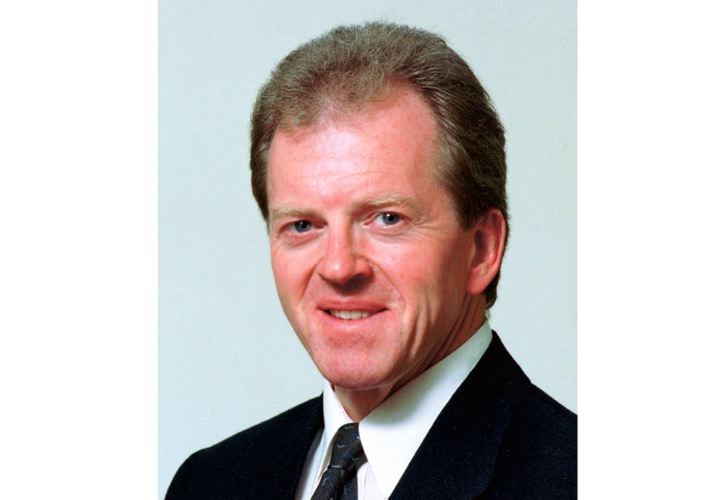VICTORIA -- For Premier Christy Clark, the decision to proceed with building Site C is one that will bear fruit over the next 100 years.
"Long after this announcement today is over, long after my working days in this job are over, I believe that the people of our province will continue to prosper and continue to create wealth and opportunity," she declared Tuesday.
For Energy Minister Bill Bennett, the giant hydroelectric dam on the Peace River "will be the last of its kind," here or anywhere else.
"We don't have any other shelf-ready Site Cs hanging around out there where you have a river already dammed up (by existing dams) and an opportunity to avail yourself of such a large reservoir."
For Site C proponent and BC Hydro CEO Jessica McDonald, "it was a day equally connected to our past as to our future."
Her point being that going back to the 1960s, the utility and the province flourished together on a multi-decade wave of hydroelectric power development that gave B.C. some of the cheapest electricity rates in North America.
"A historic milestone," said Susan Yurkovich, the Hydro executive vice-president who shepherded the project though a half-dozen years of scrutiny and controversy leading up to Tuesday's announcement.
Speaking of history, the audience included current Hydro board member Brad Bennett and the backdrop featured a photograph of his grandfather, former premier W.A.C. Bennett, who launched the province on the far-reaching era of dam construction.
A 100-year undertaking. A multi-generational payoff. History in the making. Variations on those words cropped up repeatedly Tuesday as the Liberals rationalized Site C as a decision for the ages.
Probably those considerations carried more weight at the cabinet table than the last-minute rationalizing of the budget numbers, which saw the cost jump by better than 10 per cent -- or almost $900 million -- in the final week before the announcement.
More, too, than the last-minute fiddle that reduced the estimated cost of a megawatt hour of electricity from Site C by about 25 per cent.
The "saving" arose mainly from a government decision to reduce its annual take from Hydro in the form of dividends and water rentals, thereby leaving the utility with more money for its own purposes. Or, to put it another way, the Liberals transferred some of the financial burden from Hydro ratepayers to provincial taxpayers, who are mostly one and the same.
That thumb-on-the-scales manoeuvre allowed the Liberals to argue that Site C would deliver power at a considerable advantage over independent power projects. The previous Gordon Campbell-led Liberal government used to argue the opposite, that private power had multiple advantages over public power.
But even as reporters were marvelling at the 180-degree ideological reversal among the Liberals, along came New Democratic Party leader John Horgan to confess that he saw some merit in private power, now that the Liberals were scorning it.
Both positions are as debatable as the numbers on both sides. Site C won't be up and running until 2024 at the earliest, by which time every current assumption about energy markets, inflation, interest rates, and power needs should have undergone multiple revisions.
The Liberals gave themselves some margin for things to go wrong. The budget includes a combined $3.5 billion in allowances for contingencies, inflation, interest during construction and a project reserve.
Still, you have to wonder about the cost of attracting a workforce in what could be fierce competition with other large resource projects. Plus there's the potential escalation in the cost of materials and construction, particularly on a drawn-out schedule with the possibility of further delays.
First Nations pose what is likely to be the biggest obstacle to progress. Tuesday's PowerPoint presentation quoted the favourable verdict from a recent federal-provincial report on efforts to consult First Nations and accommodate their interests.
"There has been meaningful consultation with the potentially affected aboriginal groups (and) consultation has been carried out in good faith ... the process was appropriate and reasonable in the circumstances."
It did not quote the less encouraging verdict of the joint federal-provincial review of the project itself, which rebuked Hydro on that score: "The panel disagrees with BC Hydro and concludes that the project would likely cause significant adverse effect on fishing opportunities and practices for First Nations." Ditto for hunting and trapping "and some of these effects cannot be mitigated."
If the panel is correct in its estimation -- it was chaired by Harry Swain, a former federal deputy minister of Indian Affairs -- then natives could have ample grounds for a court challenge and maybe a quasi-veto over Site C.
Responding to a question on mitigation, Hydro CEO McDonald pledged to redouble efforts to reach agreements with the affected First Nations. As one of the architects of the new relationship with aboriginal people under the Campbell government, she'll need all of her experience and the best of intentions to succeed.
In order to give her some leeway to negotiate, the Liberals put off starting construction until next summer, a six-month extension. That, in turn, necessitated a $200-million boost to the budget, to cover off the additional cost in terms of inflation and interest.
Now imagine if the project is tied up for many more months by court battles. B.C. might not have seen the last of the budget revisions.



